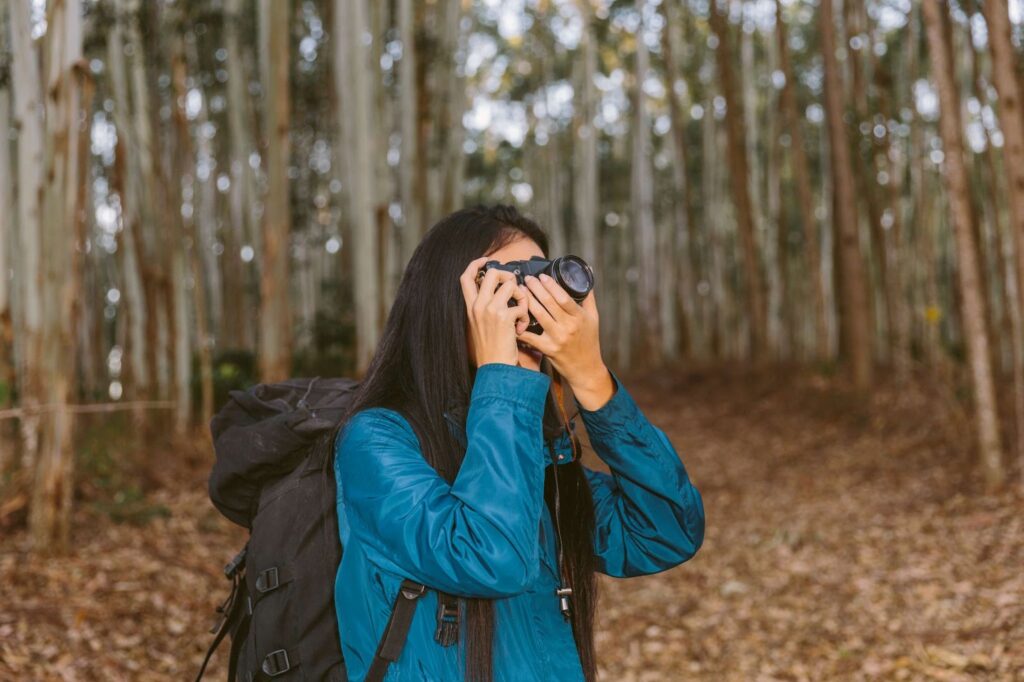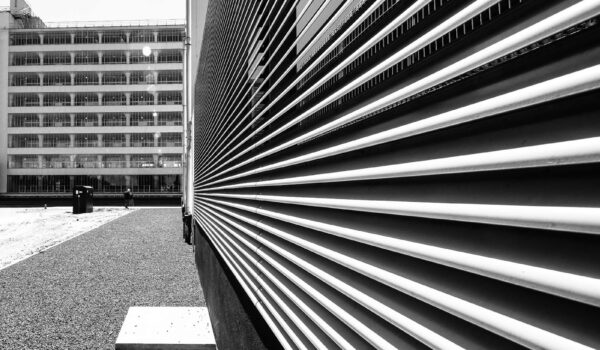Welcome to the fascinating world of photography, where the interplay of light, shadows, and composition gives birth to captivating visual stories. Among the various elements that photographers employ to craft their art, symmetry stands out as a powerful tool for creating balance and allure. In this article, we embark on a journey to explore the profound impact of symmetry in photography and discover how it elevates images to new heights of aesthetic splendor. Join us as we delve into the secrets behind this mesmerizing technique, unlocking the door to its boundless creative possibilities.
Unveiling the Art of Symmetry in Photography: A Journey into Harmonious Balance
In the enchanting realm of photography, one concept that captivates both the artist’s eye and the viewer’s soul is the mesmerizing allure of symmetry. Defined as “the quality of being made up of exactly similar parts facing each other or around an axis,” symmetry holds the power to transform a simple composition into a captivating masterpiece, where every element finds its perfect counterpart, resulting in a harmonious balance that is undeniably pleasing to the senses.
The Essence of Symmetry in Photography
Symmetry in photography emerges when certain elements within a frame mirror other elements, creating a captivating dance of visual equilibrium. A scene becomes symmetrical when its two halves possess identical or similar attributes that mirror each other like a delicate reflection, giving rise to a striking sense of cohesion and balance. While some may perceive symmetry as mere perfection or neatness, it is, in fact, a remarkable tool to create captivating images that resonate deeply with viewers.
Embracing the Beauty of Balance
At the core of symmetrical photography lies the art of balance. By thoughtfully composing a scene to exhibit symmetry, photographers imbue their work with an inherent sense of stability and proportion. Viewers are naturally drawn to these well-balanced images, finding solace and tranquility in the visually satisfying and organized presentation. When executed skillfully, symmetrical photography transcends the ordinary and allows the audience to witness a moment frozen in time, where visual harmony reigns supreme.
Unleashing the Impact of Symmetry
Symmetry in photography can have a profound impact on the way an image is perceived and the emotions it evokes. Understanding how to harness this potent tool empowers photographers to craft captivating narratives and amplify the beauty of their subjects. Here’s how symmetrical compositions can unlock the full potential of your photography:
- Creating a Sense of Harmony: Symmetry brings a sense of order and unity to an image, making it visually appealing and inviting to explore further;
- Drawing the Eye: A symmetrical subject in the center of the frame can act as a powerful focal point, guiding the viewer’s gaze directly to the heart of the photograph;
- Conveying Stillness and Serenity: Symmetry often evokes feelings of tranquility and calmness, making it ideal for capturing serene landscapes, architectural wonders, or reflective bodies of water;
- Highlighting Details: Symmetry can accentuate the finer details of a subject, creating a captivating balance that draws attention to intricate patterns and textures;
- Playing with Reflections: Water surfaces, mirrors, and other reflective elements can be used ingeniously to achieve symmetrical reflections that elevate the visual impact of the photograph.
Captivating Symmetry in Photography: Discover the 4 Most Common Types
In the mesmerizing world of photography, symmetry adds an enchanting touch, transforming a simple image into a visually appealing masterpiece. Symmetry can be found in various forms, from the familiar rotational symmetry taught in primary school to the intricate and captivating fractal symmetry. For photographers, experimenting with different types of symmetry opens up a realm of creative possibilities, allowing them to craft captivating compositions that leave a lasting impression on viewers.
Let’s delve into the four most common types of symmetry that photographers often incorporate into their work, each with its unique charm and application:
Vertical Symmetry: Elevating Architectural Photography
Vertical symmetry reigns as the most prevalent type, effortlessly drawing the eye and providing a sense of balance and elegance to photographs. By envisioning an imaginary vertical line dividing the composition in two, photographers can assess whether both sides mirror each other. When they do, the resulting image becomes a visual delight.
Applications and Tips:
- Architectural Photography: Buildings with symmetrical designs are ideal subjects for vertical symmetry. By employing this technique, photographers can accentuate the grandeur, size, and intricate detailing of impressive structures;
- Capturing Patterns: In nature or urban settings, look for patterns and designs that possess vertical symmetry, such as rows of trees, lamp posts, or columns. These elements can contribute to a harmonious and captivating photograph.
Horizontal Symmetry: Unfolding the Beauty of Landscapes
With horizontal symmetry, photographers draw an imaginary line across the center of the composition, seeking balance between the upper and lower halves of the image. This type of symmetry frequently finds its place in landscape photography, especially when a body of water, like a serene lake or tranquil ocean, graces the scene.
Applications and Tips:
- Landscape Photography: Horizontal symmetry works wonders for landscapes that feature water bodies, as the reflection enhances the overall composition’s charm. From majestic mountains mirrored in a lake to serene coastal views, this symmetry accentuates the tranquil beauty of nature;
- Natural Elements: Look for captivating natural elements that exhibit horizontal symmetry, such as waterfalls, rock formations, or expansive fields. These features contribute to a soothing and balanced composition.
Radial Symmetry: Embracing Circular Elegance
If you find yourself drawn to the allure of circular shapes and patterns, radial symmetry is a perfect match for your creative vision. This type of symmetry revolves around captivating shapes that repeat in a circular manner, guiding the viewer’s gaze inwards toward the center.
Applications and Tips:
- Ripples and Circular Rhythms: Ripples on the water’s surface are a classic example of radial symmetry. However, this technique isn’t limited to water; it can also be beautifully applied to photographing succulents, flower petals, architectural domes, wheels, and more;
- Filling the Frame: To make the most of radial symmetry, consider filling the frame with the circular subject. This draws attention to the captivating patterns and creates a compelling visual experience.
Reflective Symmetry: Discovering Beauty in Reflections
As the name suggests, reflective symmetry revolves around capturing captivating reflections. These reflections can be found on various surfaces, such as still water bodies, glass, and even buildings, adding an enchanting dimension to the photograph.
Applications and Tips:
- Water Reflections: Bodies of water, whether calm lakes, rivers, or puddles, provide excellent opportunities for capturing reflective symmetry. Seek out striking scenes where the reflected image complements the primary subject, doubling the visual impact;
- Exploring Urban Landscapes: In urban environments, reflective surfaces like glass facades and polished metal structures can offer intriguing photographic opportunities. Look for captivating angles and unusual perspectives to capture unique and thought-provoking images.
Enhance Your Symmetry Photography with Essential Equipment
Capturing striking symmetrical photos doesn’t have to be an intimidating task requiring expensive camera gear. In fact, with the right tools, you can significantly improve your photography game and achieve outstanding results. Below are some indispensable equipment options that will elevate your symmetrical photography to new heights:

Tripod: Stability for Impeccable Compositions
A tripod is a game-changer when it comes to capturing symmetrical shots. It provides essential stability, eliminating any worries about shaky hand movements or uneven horizons. This ensures that your images remain perfectly aligned and balanced, resulting in visually pleasing photographs. The tripod allows you to take your time composing the shot, exploring angles, and experimenting with different perspectives.
Tips for using a tripod:
- Look for a lightweight and portable tripod for easy transportation during outdoor shoots;
- Choose a tripod with adjustable legs and height to adapt to various shooting environments;
- Make use of the tripod’s pan and tilt features to achieve precise adjustments for perfect symmetry.
Bubble Level: A Nifty Tool for Symmetry
Achieving symmetry relies on maintaining a level perspective, and a bubble level is an incredibly useful accessory to help you accomplish just that. This simple yet effective tool enables you to determine the balance of your photo in terms of horizontals and verticals. By using a bubble level, you can ensure that your composition is flawlessly aligned, reducing the need for post-processing adjustments or cropping.
Tips for using a bubble level:
- Attach the bubble level to your camera’s hot shoe or to the tripod itself for easy visibility;
- Check the level before each shot, especially if you move your camera or tripod between setups;
- Combine the bubble level with the grid overlay on your camera’s viewfinder to achieve even greater precision.
Remote Shutter Release: Mastering Self-Portraits and Long Exposures
When aiming for symmetrical self-portraits or engaging in long exposure photography, a remote shutter release becomes an invaluable tool. It allows you to trigger the camera without touching it physically, minimizing the risk of unintentional camera movement that could ruin an otherwise perfect shot. Additionally, using a remote enables you to step away from the camera, which is particularly useful for capturing self-portraits or including yourself in the scene.
Tips for using a remote shutter release:
- Opt for a wireless remote to enjoy the freedom of movement while taking shots from a distance;
- When shooting long exposures, use the remote to avoid camera shake during the exposure;
- Experiment with different poses and compositions during self-portraits, taking advantage of the remote’s convenience.
Conclusion
In conclusion, symmetry in photography is a powerful compositional tool that holds the potential to create captivating and aesthetically pleasing images. As humans, we are naturally drawn to balance and order, and symmetry satisfies this innate desire. It is a technique that has been used throughout the history of art and photography to convey a sense of harmony, stability, and beauty.
By utilizing symmetry in photography, photographers can guide the viewer’s gaze, emphasize focal points, and evoke a sense of calmness or elegance. It encourages viewers to explore the image thoroughly and appreciate the finer details, contributing to a more immersive visual experience.
